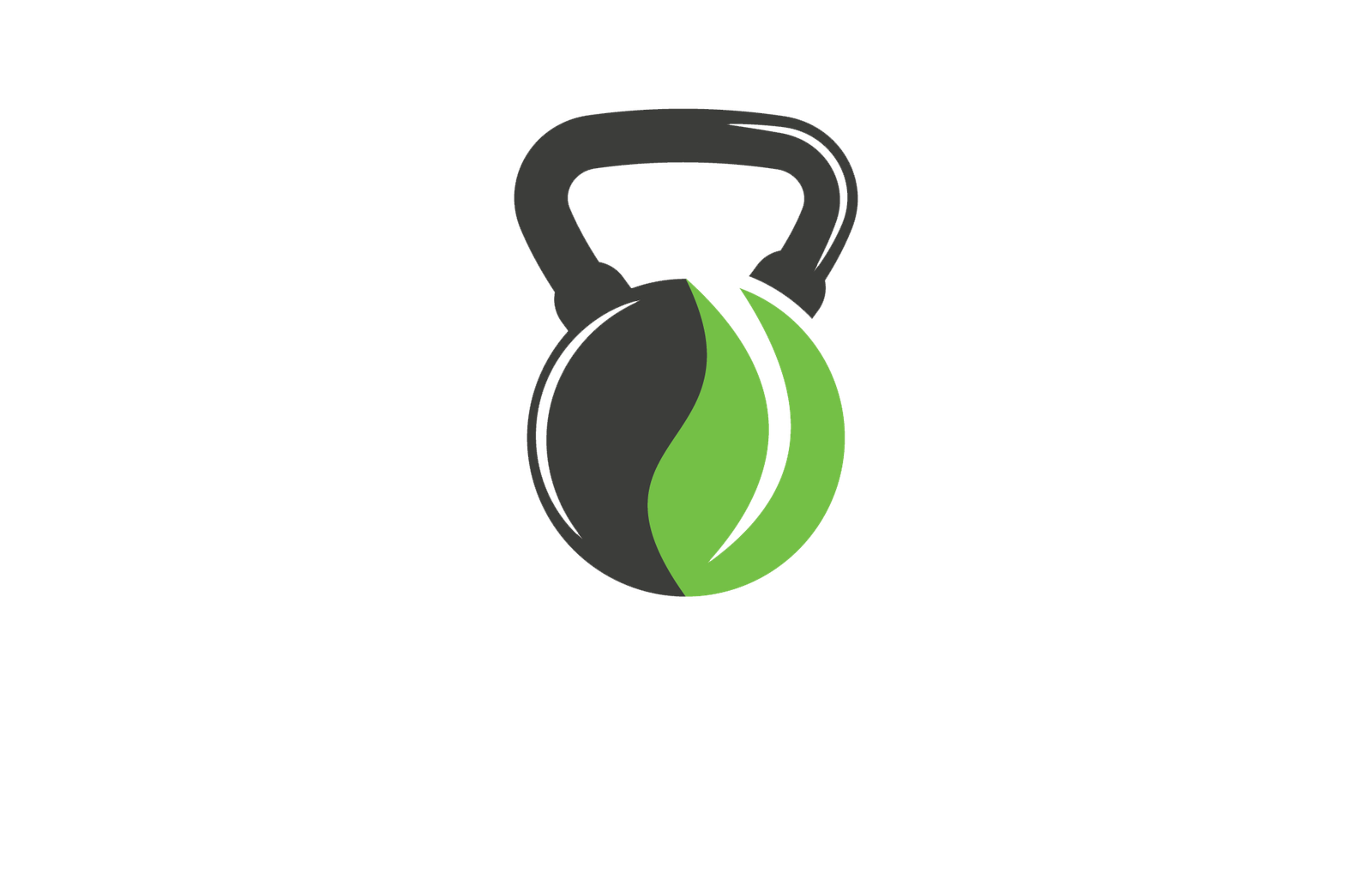Don't miss our holiday offer - 20% OFF!

Plyometric HIIT Workouts for Explosive Power
Dramatically boost your athleticism and unlock explosive power with a transformative plyometric HIIT routine that will leave you craving more.
We incorporate plyometric exercises into our high-intensity interval training (HIIT) workouts to rapidly develop explosive power, boost speed and agility, and take our fitness to the next level. By combining plyometric exercises with strength training, we build functional strength that translates to everyday movements and enhances athleticism. We focus on exercises that strengthen our core, legs, and glutes, essential for generating power. With proper form and technique, we structure our workouts into circuits, incorporating exercises like squat jumps, box jumps, and burpees. Now, let's delve into the specifics of creating a transformative plyometric HIIT routine that will tap into our full potential.
Key Takeaways
- Incorporating plyometric exercises into HIIT workouts rapidly develops explosive power through exercises like depth jumps and burpees.
- Squats, deadlifts, lunges, box jumps, and step-ups are essential exercises for building explosive power, focusing on strengthening core, legs, and glutes.
- Structuring workouts into 3-5 circuits, each consisting of 3-5 exercises, helps improve power, speed, and agility while minimizing injury risk.
- Incorporating strength training exercises builds functional strength that translates to everyday movements and enhances athleticism, ensuring progressive overload and continued improvement.
- Proper warm-up routines, post-workout stretches, and strengthening core and legs are essential for avoiding injuries and maximizing caloric burn during plyometric HIIT workouts.
Benefits of Plyometric HIIT
When we incorporate plyometric HIIT workouts into our fitness routine, we can expect a multitude of benefits that take our physical fitness to the next level. One of the most significant advantages is improved muscle recovery. Plyometric exercises, such as jump squats and box jumps, stimulate blood flow and reduce muscle soreness, allowing us to recover faster and train more frequently. This is especially important for athletes who need to perform at their best consistently.
In addition to physical benefits, plyometric HIIT workouts also improve our mental toughness. The high-intensity nature of these workouts pushes us out of our comfort zones, building resilience and mental strength. As we overcome challenging exercises and reach new personal bests, our confidence grows, and we develop a stronger mindset. This mental toughness translates to other areas of life, helping us tackle obstacles and stay motivated. By incorporating plyometric HIIT workouts into our routine, we can experience a transformative impact on both our physical and mental well-being.
Building Explosive Power Quickly
As we focus on building explosive power quickly, we'll explore the key strategies that can help us achieve this goal. We'll examine how plyometric exercises can help us power through challenging movements, and how quick force development can be achieved through targeted training. By maximizing muscle recruitment, we can tap into our full potential and take our workouts to the next level.
Power Through Plyometrics
We're incorporating plyometric exercises into our high-intensity interval training (HIIT) workouts to rapidly develop explosive power. This combination is a game-changer for achieving our fitness goals, allowing us to build muscle memory and tap into our full potential. By incorporating plyometric exercises, such as jump squats and box jumps, into our HIIT workouts, we're able to improve our power output and accelerate our progress.
Plyometrics can help us power through our workouts in several ways:
- Increased force production: Plyometric exercises, like depth jumps, help us develop the ability to generate force quickly, allowing us to lift heavier weights and perform more reps.
- Improved muscle recruitment: Plyometrics, such as burpees, engage multiple muscle groups simultaneously, improving muscle coordination and recruitment patterns.
- Enhanced neural drive: The high-intensity, fast-paced nature of plyometric exercises helps to improve our neural drive, allowing us to perform at a higher intensity for longer periods.
Quick Force Development
To build explosive power quickly, we need to focus on exercises that rapidly develop our ability to generate force, such as resisted sprints and band-resisted jumps. These exercises allow us to improve our force velocity, which is critical for explosive movements. By incorporating these exercises into our workout routine, we can quickly develop the ability to generate force rapidly, leading to increased power output.
Muscle elasticity also plays a vital role in quick force development. When we perform explosive movements, our muscles act like springs, storing energy and then releasing it rapidly. By improving our muscle elasticity, we can increase our ability to generate force quickly, leading to more powerful movements. To achieve this, we can incorporate exercises that focus on rapid contractions and relaxations, such as box jumps and depth jumps. By combining these exercises with resisted sprints and band-resisted jumps, we can quickly develop the ability to generate force rapidly, leading to explosive power.
Maximum Muscle Recruitment
Here's the output for the current subtopic:
By maximizing muscle recruitment, we can rapidly build explosive power, engaging our entire muscular system to generate maximum force in a split second. When we optimize muscle synergy, we can harness the collective strength of our muscles to produce incredible force. This is achieved through effective neural drive, which allows our nervous system to efficiently communicate with our muscles, resulting in rapid and powerful contractions.
To give you a sense of what this looks like in action, imagine:
- A sprinter exploding off the starting block, their muscles firing in perfect harmony to generate blistering speed.
- A volleyball player jumping high into the air, their legs and core working together to defy gravity.
- A gymnast tumbling across the floor, their muscles working in perfect sync to generate power and control.
Essential Exercises for Beginners
When we're new to plyometric HIIT workouts, mastering a few fundamental exercises is essential to building a strong foundation and minimizing the risk of injury. As beginners, we often focus on complex movements without establishing a solid base, which can lead to poor form and increased risk of injury. To avoid these beginner mistakes, it's vital to focus on fitness fundamentals.
We should start with exercises that work on our power, speed, and agility. Squat jumps, box jumps, and burpees are excellent choices for building explosive power. These exercises improve our ability to generate force quickly, which is essential for plyometric HIIT workouts. We should also incorporate lateral movements like side-to-side shuffles and carioca drills to improve our agility and acceleration.
Creating a Plyometric HIIT Routine
We're now ready to design a plyometric HIIT routine that challenges us and drives results. When creating our routine, we'll focus on a well-structured workout that incorporates exercises that target our power, speed, and agility.
Here are three key elements to include in our plyometric HIIT routine:
- Warm-up and cool-down: Incorporate 5-10 minutes of dynamic stretching and cardio to prepare our muscles for high-intensity exercise and aid in recovery.
- Workout structure: Divide our workout into 3-5 circuits, each consisting of 3-5 exercises. This will allow us to focus on different muscle groups while maintaining a high-intensity pace.
- Exercise selection: Choose exercises that work multiple muscle groups at once, such as jump squats, box jumps, and burpees. These exercises will help us build explosive power and endurance.
Incorporating Strength Training Exercises
As we incorporate strength training exercises into our plyometric HIIT workouts, we're looking to build functional strength that translates to everyday movements and enhances our overall athleticism. We'll focus on power development exercises that improve our ability to generate force quickly and efficiently. By targeting specific muscle groups, we'll be able to increase our power output and take our workouts to the next level.
Building Functional Strength
Incorporating strength training exercises into our plyometric HIIT workouts enables us to build functional strength that translates to everyday movements and activities. This type of strength is essential for improving our overall athletic performance and reducing our risk of injury. By focusing on functional movements, we can develop strength that is specific to our daily activities, rather than just isolating individual muscles.
Here are a few examples of functional movements that can help us build functional strength:
- Squatting to pick up groceries or children
- Lunging to get up from a fall or climb stairs
- Deadlifting to lift heavy objects or carry heavy bags
Power Development Exercises
By combining plyometric exercises with strength training, we can develop explosive power that enhances our athletic performance and daily functioning. This integration is vital, as it allows us to generate force quickly and efficiently. To achieve this, we need to incorporate exercises that target our weaknesses and muscle imbalances. Focusing on exercises that strengthen our core, legs, and glutes is necessary, as these are the primary areas responsible for generating power.
| Exercise | Muscle Groups |
|---|---|
| Squats | Legs, Glutes, Core |
| Deadlifts | Legs, Back, Core |
| Lunges | Legs, Glutes, Core |
| Box Jumps | Legs, Glutes, Core |
| Step-Ups | Legs, Glutes, Core |
When incorporating strength training exercises, vital to incorporate training periodization. This involves alternating between high-intensity and low-intensity training phases to avoid plateaus and prevent overtraining. By doing so, we can make certain progressive overload and continued improvement in our power development. By combining plyometric exercises with strength training and incorporating periodization, we can develop explosive power that enhances our athletic performance and daily functioning. Necessary to note that incorporating periodization will help us to maximize our power development.
Boosting Speed and Agility
We can substantially enhance our speed and agility by incorporating explosive plyometric exercises into our HIIT workouts. This is because plyometric exercises, such as jump squats and box jumps, improve our Fast Footwork by increasing our ability to quickly change direction and accelerate. Additionally, these exercises enhance our Quick Reflexes, allowing us to react faster to changing situations.
Here are three ways plyometric exercises can boost our speed and agility:
- Improved Acceleration: Plyometric exercises help us develop the ability to rapidly generate force, enabling us to accelerate faster and more efficiently.
- Enhanced Deceleration: By incorporating plyometric exercises into our workouts, we can improve our ability to slow down quickly and change direction on a dime.
- Increased Reaction Time: Plyometric exercises improve our reaction time, allowing us to respond faster to changing situations and make quick decisions on the fly.
Improving Cardiovascular Endurance
Plyometric HIIT workouts also substantially improve our cardiovascular endurance, allowing us to sustain high-intensity efforts over longer periods. By pushing our Cardio Limits, we increase our Aerobic Capacity, enabling us to perform daily tasks with more energy and efficiency. This is particularly important for athletes, as it allows us to maintain a high level of performance over a prolonged period.
During a plyometric HIIT workout, our heart rate increases rapidly, and our cardiovascular system adapts to the demands placed upon it. As we consistently challenge ourselves, our cardiovascular endurance improves, allowing us to recover more quickly from intense efforts. This, in turn, enables us to perform at a higher intensity for longer durations.
Improved cardiovascular endurance also has numerous benefits beyond athletic performance. It reduces our risk of chronic diseases, such as heart disease and stroke, and enhances our overall health and well-being. By incorporating plyometric HIIT workouts into our fitness routine, we can notably improve our cardiovascular endurance, leading to enhanced athletic performance and a healthier lifestyle.
Sample Plyometric HIIT Workout
Within 20-30 minutes, you can complete a thorough plyometric HIIT workout that boosts cardiovascular endurance and explosive power. We'll outline a sample workout that you can modify to suit your fitness level.
Here's a sample plyometric HIIT workout:
- Warm-up: 5-minute dynamic warm-up, including jumping jacks, leg swings, and arm circles.
- Circuit 1: 3 rounds of 30-second burpees, 30 seconds of rest, 30 seconds of jump squats, and 30 seconds of rest.
- Circuit 2: 3 rounds of 30-second box jumps, 30 seconds of rest, 30 seconds of mountain climbers, and 30 seconds of rest.
To track your progress, use a fitness tracker or mobile app to monitor your heart rate, distance covered, and calories burned. You can also experiment with different workout variations to avoid plateaus and prevent overtraining. For instance, you can swap burpees with jump lunges or replace box jumps with step-ups. By incorporating plyometric exercises into your HIIT workout, you'll be on your way to explosive power and improved cardiovascular endurance.
Tips for Avoiding Injury
When incorporating plyometric exercises into our HIIT workouts, it's essential that we take proactive measures to prevent injuries. We've all heard the phrase 'no pain, no gain,' but we don't want to push ourselves too hard and end up sidelined with an injury. To avoid this, we need to prioritize proper warm-up routines and post-workout stretches.
Before starting our plyometric HIIT workout, we should dedicate 10-15 minutes to dynamic stretching and light cardio. This gets our heart rate up, loosens our muscles, and prepares our joints for the high-intensity movements to come. We should also focus on strengthening our core and legs, as these are the foundation of explosive power.
After our workout, it's vital that we take the time to stretch and cool down. This helps reduce muscle soreness and improves flexibility. We should hold each stretch for 20-30 seconds and focus on our calves, hamstrings, quads, and hip flexors. By taking these precautions, we can minimize our risk of injury and maximize our gains from plyometric HIIT workouts.
Maximizing Caloric Burn
As we focus on maximizing caloric burn in our plyometric HIIT workouts, we're looking to amplify our results by incorporating specific strategies that supercharge our energy expenditure. We'll explore the most effective caloric expenditure boosters and learn how to optimize our energy utilization for maximum fat-burning potential. By incorporating these techniques into our workouts, we can take our fitness journey to the next level and achieve our weight loss goals.
Caloric Expenditure Boosters
We can substantially increase our caloric expenditure by incorporating specific plyometric exercises into our HIIT workouts. This not only boosts our fat burning capabilities but also triggers a metabolic surge that lasts long after our workout is complete. By incorporating high-intensity, explosive movements, we create an oxygen debt that our bodies must work to repay, resulting in an increased caloric expenditure.
Here are three plyometric exercises that can help take our caloric burn to the next level:
- Box Jumps: Jumping onto a box or bench requires explosive power and triggers a significant caloric expenditure.
- Burpees: This full-body exercise combines a squat, push-up, and jump, making it a caloric expenditure powerhouse.
- Kettlebell Swings: The dynamic movement of kettlebell swings engages our entire body, resulting in a significant caloric burn.
Efficient Energy Utilization
By optimizing our energy utilization during HIIT workouts, we can maximize our caloric burn and achieve a more efficient fat-burning machine. This is essential, as it allows us to get the most out of our high-intensity exercises while minimizing waste. One key strategy is energy conservation, which involves pacing ourselves to avoid exhausting our energy stores too quickly. By doing so, we can maintain a high level of intensity throughout the workout, thereby maximizing our caloric burn.
Another important factor is aerobic endurance, which enables us to sustain our energy output over time. By building our aerobic endurance through consistent HIIT training, we can increase our body's ability to utilize fat as a primary energy source. This, in turn, enhances our fat-burning capabilities, allowing us to torch more calories during and after our workouts. By combining energy conservation and aerobic endurance, we can create a potent fat-burning machine that efficiently utilizes energy to maximize caloric burn.
Taking Your Workout to Next Level
To push our fitness boundaries, we're going to shake up our routine and inject a dose of intensity into our plyometric HIIT workouts. It's time to take our training to the next level.
To do this, we'll focus on building our Mental Toughness, pushing through the discomfort and pain that comes with intense exercise. We'll also prioritize Workout Accountability, tracking our progress and holding ourselves responsible for our results.
Here are a few ways we can take our workouts to new heights:
- Increase the intensity: Add more explosive movements, like box jumps and depth jumps, to our routine.
- Up the ante: Incorporate more challenging exercises, like single-leg hops and lateral bounds.
- Mix it up: Change our workout environment, whether that means exercising outdoors or trying a new gym, to keep things fresh and exciting.
Frequently Asked Questions
Can I Do Plyometric HIIT Workouts With a Prior Injury?
We understand concerns about exercising with a prior injury. Before starting plyometric HIIT workouts, we recommend consulting a doctor and incorporating injury prevention strategies, such as safe modifications, to minimize risks and guarantee a safe return to exercise.
Do I Need Special Equipment for Plyometric HIIT Exercises?
Life is a puzzle, and finding the right equipment is a vital piece. Luckily, we don't need a plethora of Gym Essentials to get started with plyometric HIIT exercises; a little Space Constraints creativity can go a long way.
How Often Should I Incorporate Plyometric HIIT Into My Routine?
We aim to incorporate plyometric HIIT into our routine 2-3 times a week, as consistency matters; we'll gradually increase intensity and volume over time to apply progressive overload, ensuring continued progress and improvement.
Can Plyometric HIIT Workouts Be Modified for Seniors or Beginners?
"We're thrilled to report that virtually anyone can benefit from plyometric HIIT workouts! For seniors or beginners, we modify exercises to offer low-impact alternatives and gentle progressions, ensuring a safe and effective introduction to explosive power training."
Will Plyometric HIIT Workouts Help With Weight Loss or Just Muscle Gain?
We find that plyometric HIIT workouts can indeed aid in weight loss, as they induce intense fat burning and calorie burn, while also promoting muscle toning and power endurance, ultimately leading to a leaner physique.
Conclusion
Incorporating plyometric HIIT into our workout routine has been a game-changer for us. Research suggests that explosive power training can improve our acceleration, speed, and overall athletic performance. By combining plyometrics with HIIT, we're not only building explosive power quickly but also maximizing caloric burn. As we continue to push ourselves, we're excited to take our workout to the next level and see the results.



